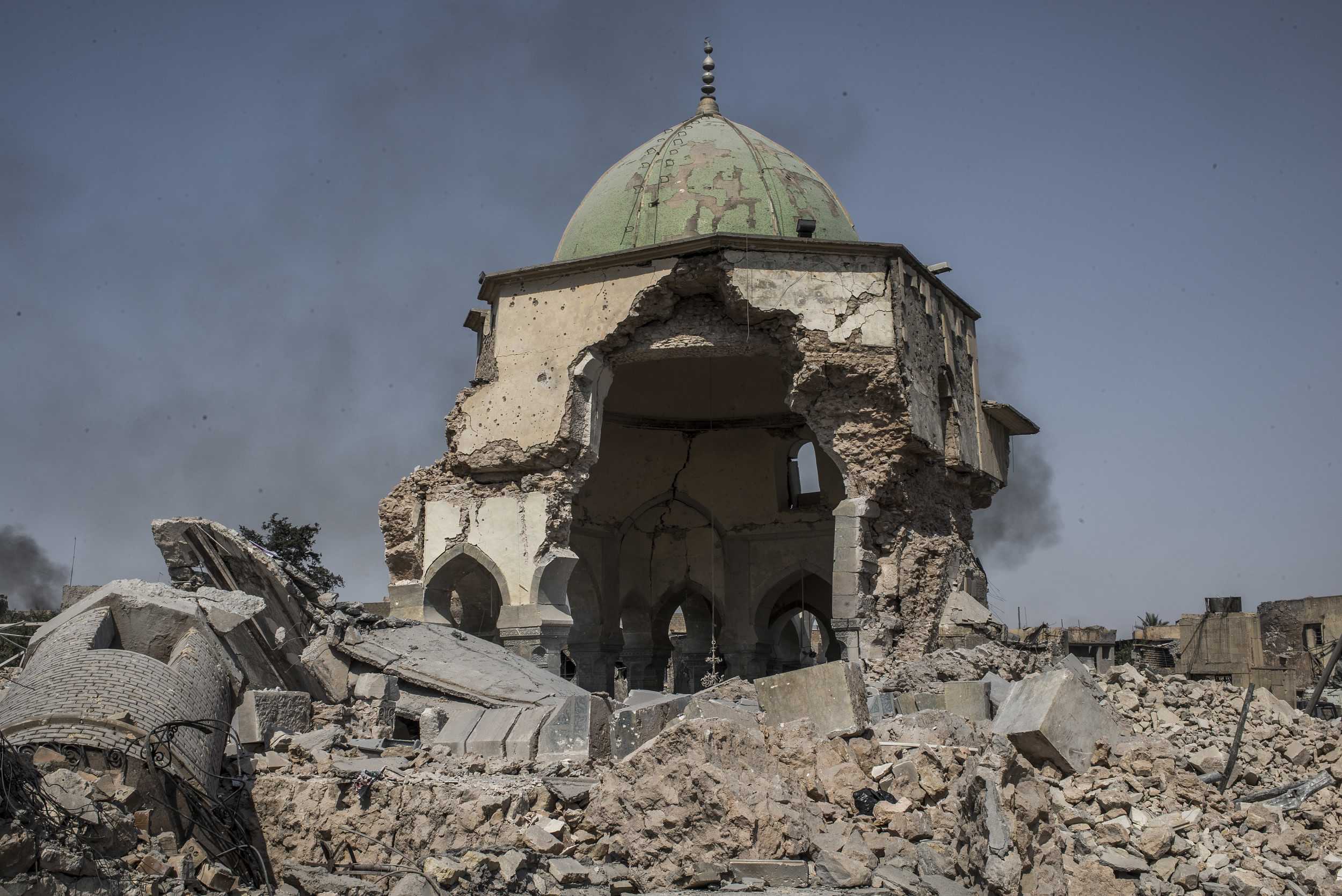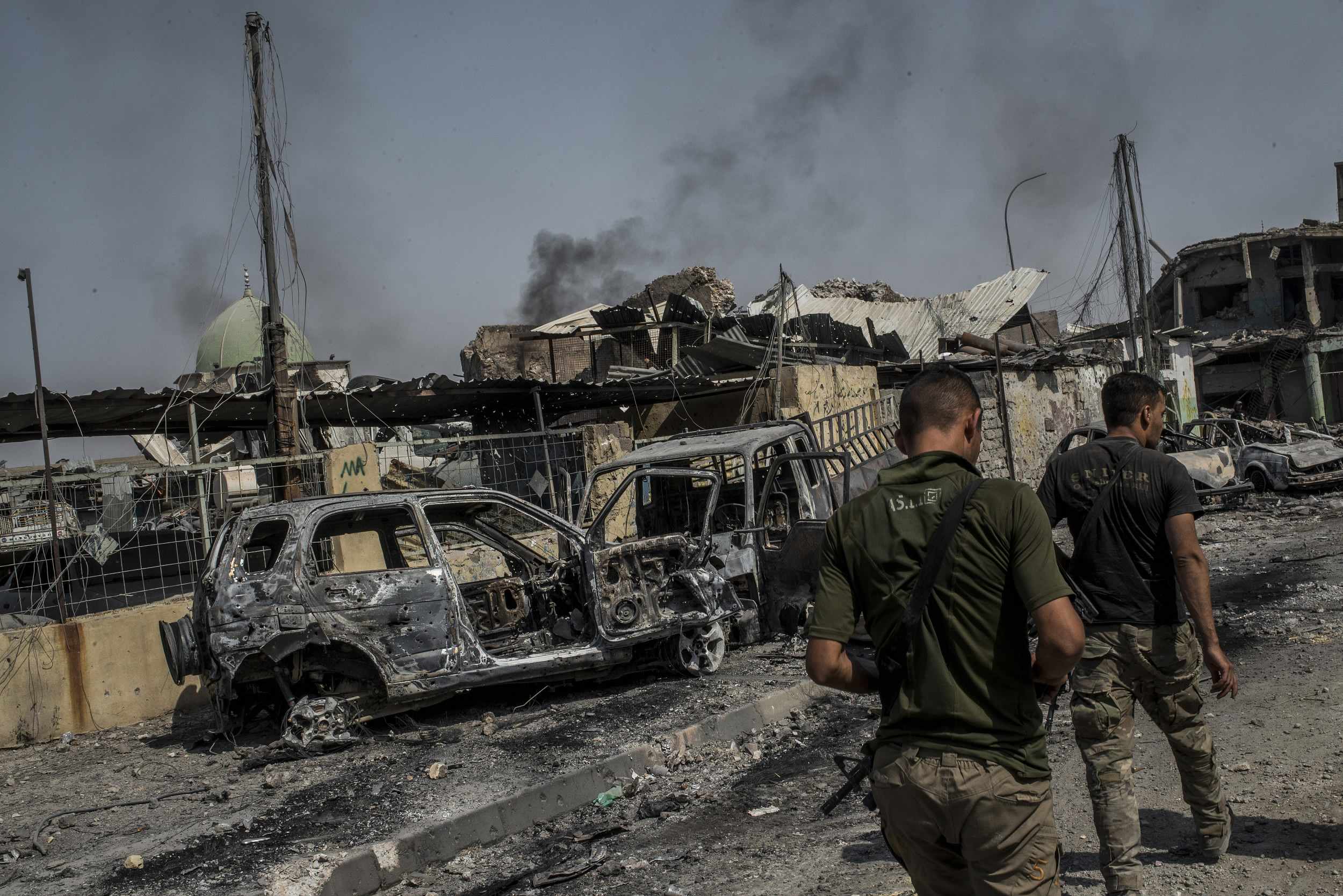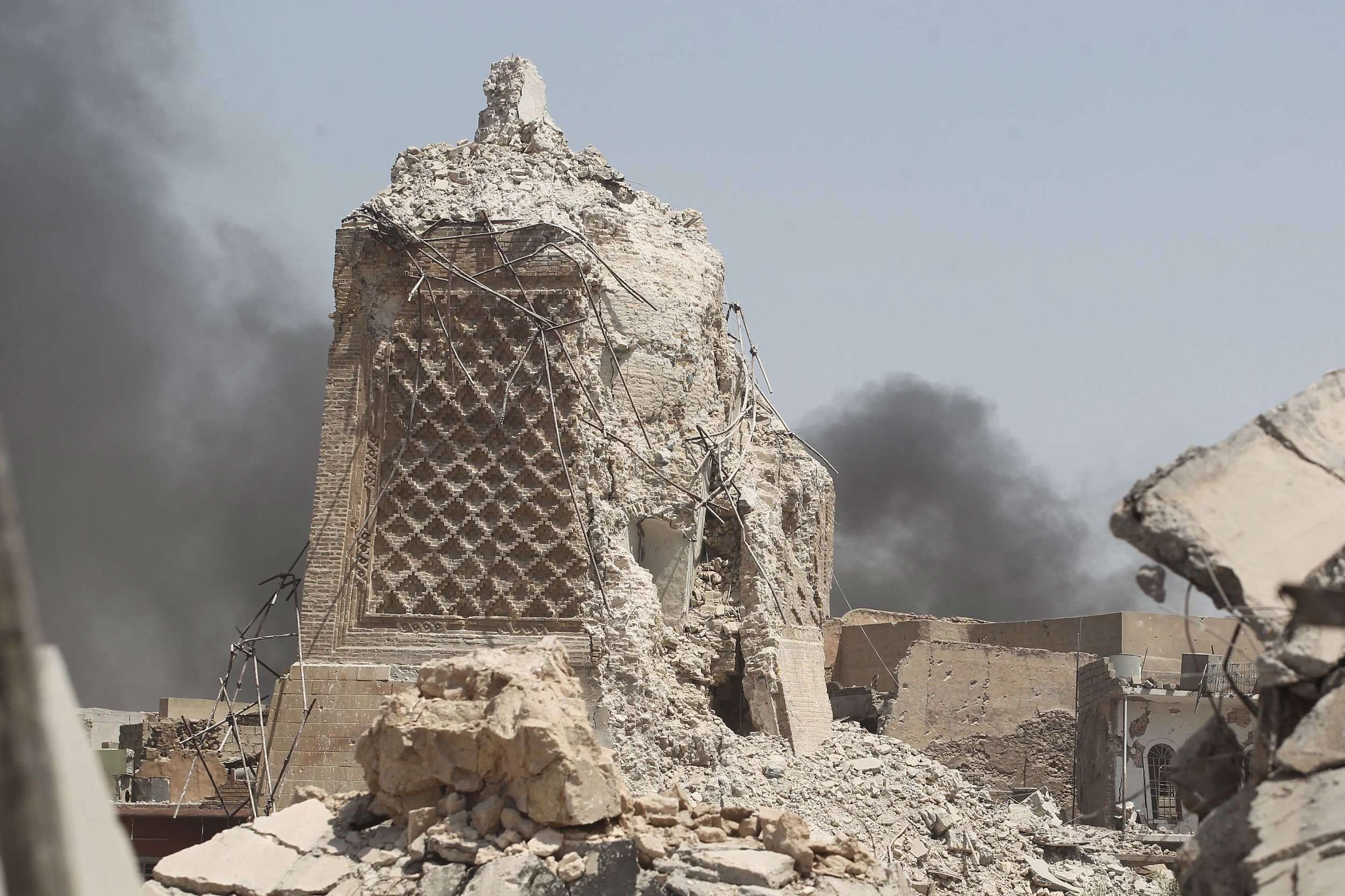Iraqi forces on Thursday captured the compound of a landmark mosque in Mosul that was blown up last week by ISIL – a hugely symbolic site from where the top ISIL leader declared an Islamic “caliphate” nearly three years ago.
The advance comes as the Iraqi troops are pushing deeper into the Old City, a densely populated neighborhood west of the Tigris River where the al-Nouri Mosque with its 12th century al-Hadba minaret once stood and where ISIL militants are now making their last stand in what are expected to be the final days of the battle for Mosul, Iraq’s second-largest city.
Iraqi special forces reached the al-Nuri Mosque compound and took control of the surrounding streets on Thursday afternoon, following a dawn push into the area, Lt. Gen. Abdul Wahab al-Saadi of the elite force told The Associated Press.
Damaged and destroyed houses dot the route Iraqi forces have carved into the congested district — along a landscape of destruction where the stench of rotting bodies rises from under the rubble.

The destroyed al-Nuri mosque in the Old City of west Mosul where heavy fighting continues on June 30, 2017 in Mosul, Iraq. /VCG Photo
Thursday’s push comes more than a week after Iraqi forces launched the operation to retake Mosul’s last ISIL-held parts of the Old City neighborhood, with its narrow alleyways and dense clusters of homes.
Taking the mosque is a symbolic victory — from its pulpit, ISIL leader Abu Bakr al-Baghdadi in July 2014 declared a self-styled Islamic “caliphate,” encompassing territories then-held by the Islamic State group in Syria and Iraq.
Iraqi and coalition officials said ISIL blew up the mosque complex last week. ISIL has blamed a US airstrike for the destruction, a claim rejected by a spokesman for the US-led coalition.
US Army Col. Ryan Dillon told the AP that coalition planes “did not conduct strikes in that area at that time.”

Iraqi ISOF forces walk past the destroyed al-Nuri mosque in the Old City of west Mosul where heavy fighting continues on June 30, 2017 in Mosul, Iraq. /VCG Photo
ISIL had initially tried to destroy the al-Nouri Mosque in July 2014, saying the structure contradicted their fundamentalist interpretation of Islam. Mosul residents converged on the area, however, and formed a human chain to protect it.
Last week’s destruction was only the latest in a long series of priceless archaeological and cultural sites that the militants have ravaged across Iraq and Syria.
In addition to pillaging hundreds of treasures and artifacts, ISIL fighters have damaged or destroyed dozens of historic places, including the town of Palmyra in Syria, home to one of the Middle East’s most spectacular archaeological sites; the 2,000-year-old city of Hatra; and the nearly 3,000-year-old city of Nimrud in Iraq’s Euphrates River valley.
After months of fighting, the ISIL hold in Mosul has now shrunk to less than two square kilometers of territory but the advances have come at considerable cost.

The ruined Grand al-Nouri Mosque after it was retaken by Iraqi forces from ISIL militants at the Old City in Mosul, Iraq, June 30, 2017. /VCG Photo
“There are hundreds of bodies under the rubble,” said special forces Maj. Dhia Thamir, deployed inside the Old City. He added that all the dead bodies along the special forces’ route were of ISIL fighters.
Special forces Maj. Gen. Sami al-Aridi acknowledged that some civilians have been killed by airstrikes and artillery in the fight for the Old City. “Of course there is collateral damage, it is always this way in war,” he said.
“The houses are very old,” he said, referring to the Old City, “so any bombardment causes them to collapse completely.”
Al-Aridi said the clearing of the mosque will likely require specialized engineering teams since the militants have likely rigged the site with explosives.

Smoke billows in the background behind the base of Mosul's destroyed ancient leaning minaret, known as the "Hadba" (Hunchback), in the Old City on June 30, 2017, after the area was retaken by the Iraqi forces from ISIL fighters. /VCG Photo
The campaign to retake Mosul — formally launched in October — is in its final stages though the progress has been slow as the last militants there are holed up with an estimated 100,000 civilians, according to the United Nations.
The fight for the city has also displaced more than 850,000 people and while Iraqi forces have had periods of swift gains, combat inside Mosul has largely been grueling and deadly for both security forces and civilians.
In Baghdad, state TV declared the capture the al-Nuri Mosque with an urgent text scroll that said: “The State of Myth Has Fallen.”
(Source: AP)
Related story:










